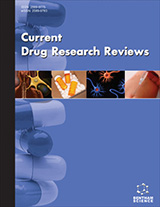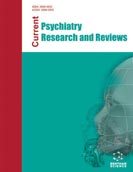
Abstract
Background: Psychotropic polypharmacy is particularly common, which puts psychiatric patients at high risk for developing drug-drug interactions.
Objective: We aimed to study potential interactions between psychotropic medications prescribed within the outpatient psychiatry setting.
Methods: This was an audit study, which targeted a sample of outpatient prescriptions ordered within the outpatient clinics of the main psychiatry hospital in Bahrain over 2017. We studied the grades and correlates of interactions between psychotropic drugs.
Results: The total number of prescriptions in our sample was 992 (56.1% males, 43.9% females). Psychotropic polypharmacy was detected in 842 prescriptions (84.9%). Potential interactions between psychotropic drugs were observed in 550 prescriptions (56.4%). The degree of interaction was minor in 43 prescriptions (7.8%), significant in 419 prescriptions (76.2%), and serious in 88 prescriptions (16%). Schizoaffective disorder subjects were the most likely to suffer from interactions (64.6%), whereas prescriptions issued for those who had schizophrenia contained the least number of interactions (51.6%). The total number of interactions was strongly associated with polypharmacy (p < .001) and gender (p < .01), but not with age (p > .05) or diagnosis (p > .05).
Conclusion: High prevalence of polypharmacy and interactions between psychotropic medications were observed in our sample, particularly of the significant grade.
Keywords: Drug-drug interactions, polypharmacy, psychotropic drugs, plasma level, schizophrenia, schizoaffective disorder.
Graphical Abstract
[PMID: 31038898]
[http://dx.doi.org/10.1002/cpt.1434] [PMID: 30912119]
[PMID: 24516494]
[http://dx.doi.org/10.1001/jama.289.13.1652] [PMID: 12672733]
[http://dx.doi.org/10.1590/1518-8345.1316.2800] [PMID: 27598380]
[PMID: 31452508]
[http://dx.doi.org/10.1097/01.pra.0000265766.25495.3b] [PMID: 17414685]
[http://dx.doi.org/10.1017/S2045796017000683] [PMID: 29117869]
[http://dx.doi.org/10.1016/j.ijmedinf.2019.04.006] [PMID: 31128828]
[http://dx.doi.org/10.3233/JPD-150646] [PMID: 26756742]
[PMID: 25628499]
[PMID: 27382268]
[http://dx.doi.org/10.1080/17425255.2019.1669560] [PMID: 31526279]
[http://dx.doi.org/10.1371/journal.pone.0098043] [PMID: 24915073]
[http://dx.doi.org/10.1016/j.amjopharm.2010.06.004] [PMID: 20624616]
[http://dx.doi.org/10.2165/11586870-000000000-00000] [PMID: 21250763]




























